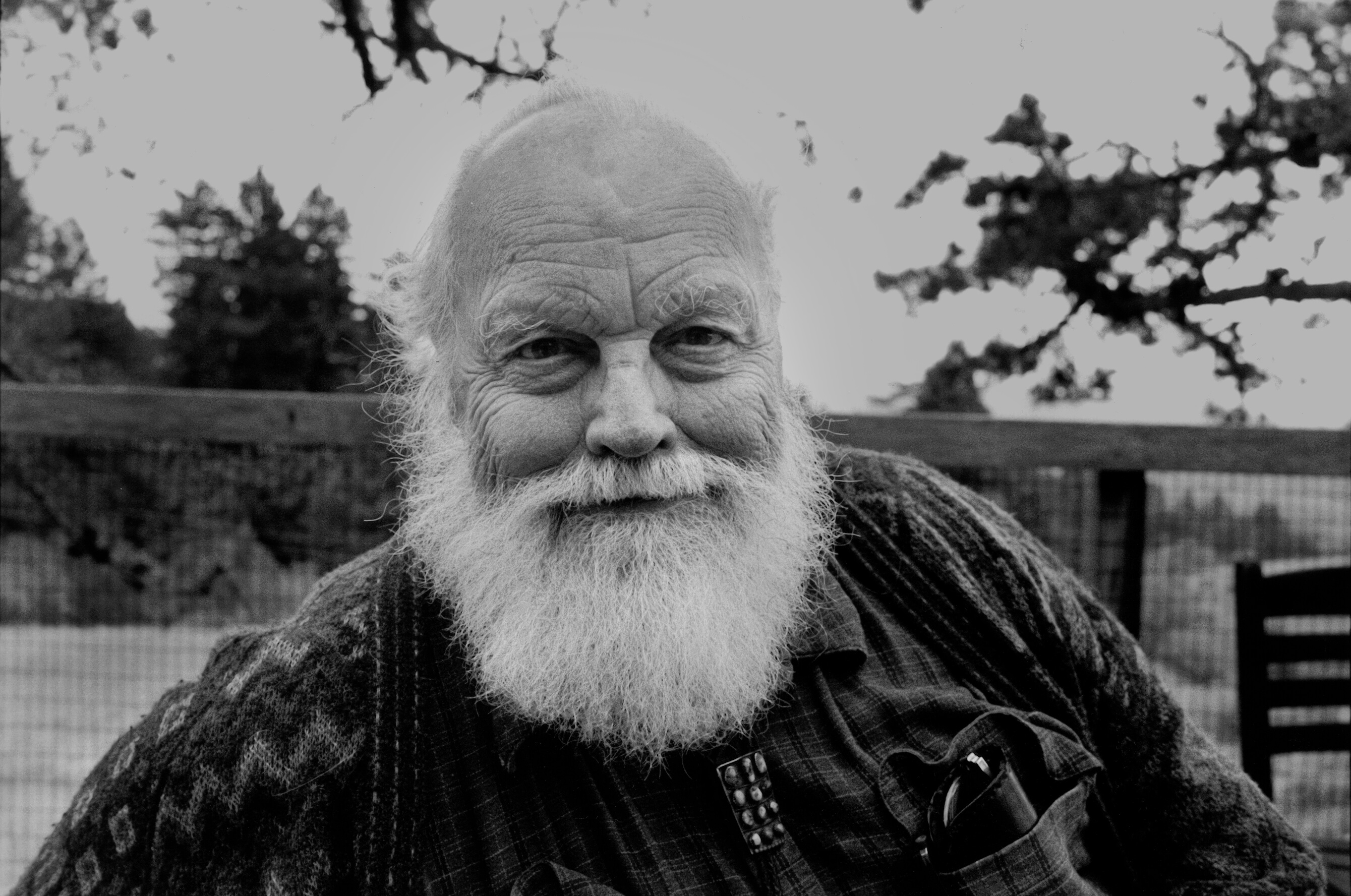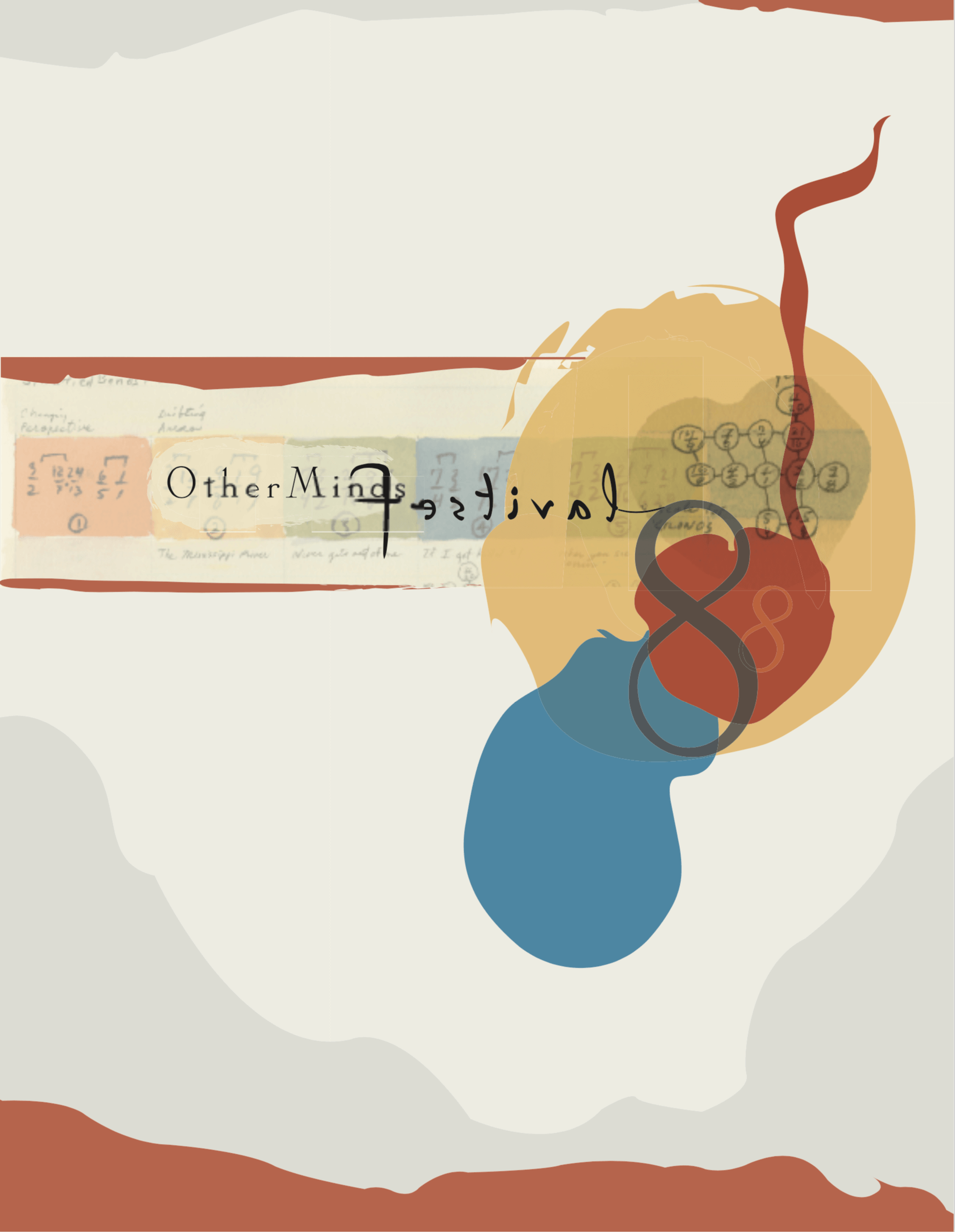
Statement by Other Minds Executive and Artistic Director, Charles Amirkhanian
Each year we host composers whose pioneering spirits are perhaps their most notable shared feature. All have gone their own way instinctively, rather than following rote patterns of career-building. This year we honored and celebrated the 85th birthday of Lou Harrison, the 75th of Randy Weston, and the 70th of Pauline Oliveros. We were happy to welcome the remarkable Ricardo Tacuchian from Brazil and on Ondes Martenot, Takashi Harada from Japan. We musically wined and dined with Annea Lockwood and Richard Teitelbaum, whose work deals so profoundly with electronics. We were thrilled to have composer, pianist and conductor, originally from Cuba, Tania León. And we saw jaws drop in the presence of composer-inventor-artist Ellen Fullman and her Long String Instrument. Thanks to the Kronos Quartet, baritone Thomas Buckner, guitarist David Tanenbaum, New York’s Continuum, shakuhachi master Masayuki Koga, keyboardist Linda Burman-Hall, and the many other excellent performers who graced our stage this year.
Artist Bios
Tania León is a vital new music personality, highly regarded as a composer and conductor and recognized for her accomplishments as an educator and advisor to arts organizations. Her work is, according to the Swiss newspaper Tribune de Genève, “Aboundingly earthy, rhythmic, and embellished by deeply moving nostalgia, [standing] at the crossroads of every musical emotion.” Born in Havana, Cuba, León came to the United States in 1967. At the invitation of Arthur Mitchell, she became a founding member and the first musical director of the Dance Theater of Harlem in 1969, establishing the Dance Theater’s music department, music school, and orchestra. She instituted the Brooklyn Philharmonic Community Concert Series in 1978. From 1993 to 1997 she was the New Music Advisor to Kurt Masur and the New York Philharmonic and she served as Latin American Music Advisor to the American Composers Orchestra until 2001. León has received awards from the American Academy of Arts and Letters, the National Endowment for the Arts, Chamber Music America, the Lila Wallace/Reader’s Digest Fund, NYSCA, ASCAP, and Meet the Composer, among others. In 1998 she held the Fromm Residency at the American Academy in Rome; she has also been a resident at Yaddo (supported by a MacArthur Foundation Award), and at the Rockefeller Foundation’s Bellagio Center in Italy. León was the recipient in 2000 of the Tow Award at Brooklyn College, where she is professor of Music. She received an Honorary Doctorate degree from Colgate University in 1999. She has held master classes at the Hamburg Musikschule in Germany, and has been Visiting Lecturer at Harvard University and Visiting Professor of Composition at Yale University. As the Boston Phoenix called it, León’s music is “…art of the highest order. [It] doesn’t appropriate folk roots so much as radically inspire us to refigure what those roots are.”
Ellen Fullman’s career in music was launched at age one, when Elvis Presley kissed her hand. At thirteen she impersonated Janis Joplin for her grade school talent show. She went on to earn a BFA in Sculpture from the Kansas City Art Institute, leading her to create her “Metal Skirt Sound Sculpture,” which she wore to perform Streetwalker at the 1980 New Music America festival in Minneapolis. Soon after, Fullman accidentally discovered the sound of longitudinally vibrating long strings. Since then, she has been developing the Long String Instrument (LSI), and its abundant possibilities. Fullman has presented her work in art spaces, festivals, and museums in the United States, and in Europe. She has received numerous awards and commissions from organizations including the New York Foundation for the Arts, National Endowment for the Arts, New Forms Regional Initiative, and Meet the Composer. She was commissioned by the Artist Trust Fellowship in (1999), and was awarded a one-year residency in Berlin from the Deutcher Akademisher Austauschdienst (2000). Also, her music was represented in The American Century; Art and Culture, 1950-2000, at the Whitney Museum of American Art in New York. Recordings of her work appear on the New Albion, Columbia, XI, Apollo, and Deep Listening record labels. Fullman teaches composition classes and sound meditation at “The Candy Factory,” her studio in Seattle.
Ellen Fullman has been developing the Long String Instrument for more than twenty years, and it has evolved into an astounding expression of artistic individuality. The instrument is based on the longitudinal mode of vibration, with one hundred long wires strung over approximately ninety feet. The strings are attached to the soundboard, much in the same way a harp is constructed. The string goes through a hole in the soundboard, a loop is made, a pin is set in the loop, then the string is pulled against that and attached to the wall at the other end of the room. Some of the wires pass through resonator boxes at sixty and thirty feet, and the bass wires extend for the full distance. Tuning is accomplished in just intonation with ‘C’ clamps at harmonic intervals. The instrument is played is by stroking the string with rosin-covered hands and walking along its length, creating a compression wave, rather than a transverse wave, which would result from the action of plucking. Fullman has also developed various extended techniques to evoke different textures from the instrument. “The quality of the sound has an endless character, approaching infinity,” says New Albion Records.
Thomas Buckner (“An extraordinary baritone, a leading vocalist in any 20th century idiom” — The Village Voice) has won a special niche as a leading performer and producer of avant-garde music. A baritone with a wide range of experience in a variety of genres, he is best known for his work with contemporary composers and improvisors.
In association with composer Robert Ashley, he has performed as a lead singer in the opera Atalanta (Acts of God), which toured throughout Europe and the United States, and was recorded by Lovely Music, Ltd. He currently tours with eL/Aficionado (which was written for him by Ashley) and Improvement (Don Leaves Linda), Foreign Experiences and, Now Eleanor’s Idea.
These four operas were premiered at the Avignon Festival and presented at the Strasbourg Music Festival in France and The Next Wave Festival in New York. Mr. Buckner has also worked regularly with composer Roscoe Mitchell, recently in his Roscoe Mitchell New Chamber Ensemble, which released the critically acclaimed CD, Pilgrimage on the Lovely Music label. On the Knitting Factory Works label, he appears as guest vocalist on First Meeting with Roscoe Mitchell and Borah Bergman.
He appeared singing his own compositions at the Asian Contemporary Music Festival in South Korea, at the Other Minds I Festival in San Francisco, and at Willow Place in Brooklyn. His two recent solo CD’s, Full Spectrum Voice, and the new Sign of the Times, both feature commissioned works and are available on the Lovely Music label.
In Berkeley, California, where he resided from 1967-1983, Buckner founded 1750 Arch Concerts, which presented over 100 events a year for eight years, and 1750 Arch Records, which released over 50 record albums. He was vocal soloist and co-director of the 23-piece Arch Ensemble, which performed and recorded the work of 20th century composers. Since 1989, he has curated the World Music Institute’s “Interpretations” series in New York.
Buckner has also worked with a veritable who’s who of established and emerging composers, including Alvin Lucier, Jin Hi Kim, Annea Lockwood, Brian Smith, Thurman Barker, and Henry Threadgill, and had the lead role in David First’s new opera Manhattan Book of the Dead which premiered at LaMama in the Spring of 1995.
Recent performances include Mahler’s Songs of a Wayfarer with the Philippine Philharmonic Orchestra and the world premiere of Francisco Feliciano’s opera Ashen Wings in Manila. He is a member of the improvising quartet Act of Finding, which has released a CD on O.O. Discs by the same name.
Ricardo Tachuchian, son of Armenian immigrants, was born in Rio de Janeiro, Brazil, in 1939. He is a celebrated composer, conductor, and scholar in his native Brazil and has received ample praise for his work throughout the United States, Europe, and South America. Among the most prestigious accolades Tachuchian has received are two Fulbright fellowships and a residency at the Bellagio Center in Italy awarded by the Rockefeller Foundation. His work has been commissioned, published, and commercially recorded in Brazil and the United States and he holds a full professorship at the Federal University of Rio de Janeiro. Tachuchian’s early work followed in the traditional, nationalistic footsteps of Brazilian classical music giant Hector Villa-Lobos, but in the seventies he began to adopt modernist leanings, concentrating on creating atmosphere and ambience. For the last two decades, Tachuchian has been committed to what he calls “the overcoming of extremes,” or the development of a post-modern synthesis of the traditional and experimental in which he values texture, density, timbre, and dynamic parameters within a contrasting context of precipitous rhythms, lyric expression, and a cosmopolitan and urban flavor. His development of the “T-System” in the 1980s, a serial form of pitch control, brings his music its characteristic liminal quality between tonal and atonal ambience. Certainly, “His eclectic music projects a strong quality of craftmanship and serious artistry,” as Latin American Music Review has described it.
Japanese composer and performer Takashi Harada is a prolific exponent of all things Ondes Martenot, with more than two hundred premieres to his credit. He has nearly single-handedly revived public interest in the Ondes for his generation, with numerous commissions attesting to his virtuosic command of the instrument. As a child, Harada began violin studies at age three and piano at seven. With a brief stopover for an Economics degree from Keio Gijuku University, he went on to study Ondes Martenot with Jeanne Loriod and piano with Kieko Toyama, and was awarded first prize upon his graduation in 1982 from the Conservatoire National Supérieur de Paris. Harada has appeared regularly as a soloist with major symphony orchestras throughout the world. He has been recognized by the Global Music Award, Idemitsu Award, Hida-Furukawa Music Award, Yokohama Culture Award, and Diapason d’Or for his recording of Messiaen’s Turangalîla-Symphonie. His wide-ranging work includes soundtracks for the films Rising Sun (directed by Philip Kaufman, music by Toru Takemitsu), D-zaka no Stsujin Jiken (directed by Ako Jissoji, music by Shin-ichiro Ikebe), and Snake Eyes (directed by Brian de Palma, music by Ryuichi Sakamoto). He also performed for the Tokyo Ballet’s production M—the life of Yukio Mishima (choreography by Maurice Béjart, music by Toshiro Mayuzumi). Harada has composed and performed extensively for rock, jazz, and improvisational ensembles as well, and has released recordings on the Victor, Fontec, and Decca labels. His most recent compositions include Twilight, The Floating Light for Ondes and Orchestra, and symphonic scenes for the Japanese animated film A Tree of Palme.
The Ondes Martenot. Invented in Paris in 1928 by Maurice Martenot, the Ondes Martenot (sometimes called the “ondes musicales”) is a significant early monophonic (i.e. music with a single melodic line of notes without harmonies) electronic instrument. It operates on the same basic principle as the theremin, but uses a seven-octave keyboard for performance. Two oscillators, one producing a fixed frequency and the other a variable one, are used to produce a single tone, in an effect called “heterodyning.” The two oscillators are used in conjunction with one another that results in a frequency that is either the difference between them or the sum of both. The pitch is not directly generated, in other words. The keyboard, performed with the right hand, is used to control the frequency of the variable oscillator. The left hand is used to operate a key that controls dynamics, attack, and timbre. There is also a knee lever that the performer can use in place of the left hand, allowing it to join the right hand on the keyboard. Grove’s Dictionary of Music and Musicians calls the Ondes “one of the most successful electronic musical instruments developed before the synthesizer.”
Downbeat Magazine declared that Richard Teitelbaum, “…whose background includes both classical music and improvised jazz, is one of those rare individuals with the tasteful sensibility to recognize the beauty of the synthesizer and the technological expertise to intelligently employ it. He utilizes electronics to liberate his musical ideas, freeing them from the technical limitations inherent in performing on traditional instruments.” Indeed, Teitelbaum is a composer and performer known principally for his live electronic and interactive computer music. He was a founder, with Frederic Rzewski and Alvin Curran, of Musica Elettronica Viva in Rome in 1966. He has composed works in a variety of genres, including compositions for the Japanese shakuhachi master Katsuya Yokoyama, pianists Aki Takahashi and Ursula Oppens, a choral piece for twenty Japanese Buddhist monks, and multimedia works with Nam June Paik, Joan Jonas, and others. Teitelbaum’s work has been performed around the world, and he is the recipient of many awards, including the Prix Ars Electronica from Austrian Radio and Television; commissions from the Venice Biennale, German Radio, National Endowment for the Arts, New York State Council on the Arts, Mary Flagler Cary Trust, Meet the Composer/NEA Commissioning Program, and Rockefeller Foundation; and Fulbright research grants for work in Italy and Japan. His recordings appear on Tzadik, Music and Arts, Hat Art, Wergo, and Moers record labels. Teitelbaum has held teaching positions at Vassar College, California Institute of the Arts, Antioch College, York University in Toronto, and Milton Avery Graduate School of the Arts. He currently is Associate Professor of Music at Bard College.
Composer and Pianist Randy Weston was born April 6, 1926, and raised in Brooklyn, New York. In the late 1940s he studied privately with Thelonious Monk and began playing piano professionally in the early 1950’s with Cecil Payne, Ray Copeland, and Kenny Dorham. In 1954 he became the first modern jazz soloist to record for the Riverside label and, in retrospect, is one of the few major pianists to borrow directly from the style of Monk.
Many of his compositions have become jazz standards and he is internationally praised and has performed in every major jazz club in New York, in other major American hubs, and in North and West Africa. Weston made his first trip to Nigeria in 1961 and subsequently made a three-month tour of fourteen North and West African countries with his sextet in 1967. This led him to settle in Morocco in 1968, where he continued to tour and perform throughout Morocco, Tunisia, Togo, the Ivory Coast, and Liberia. Weston has made more than fifty recordings throughout his lifetime, the most celebrated including African Cookbook, Little Niles, Blue Moses, Berkshire Blues, Uhuru Africa, and Grammy-nominated Tanjah and Carnaval. A prolific composer, Weston’s highly individualistic works have been recorded by jazz virtuosi like Max Roach, Monty Alexander, Dexter Gordon, Jimmy Heath, Kenny Burrell, Abbey Lincoln, Bobby Hutchinson, Lionel Hampton, and Cannonball Adderly. Weston is an articulate spokesman on the pivotal position of African music, dance, and other arts within world culture; on the diversity and importance of Africa’s vast musical resources; and on encouraging true cultural exchange and mutual learning between creative artists.
Pauline Oliveros, composer, performer, and humanitarian, was a pioneer in American music. Acclaimed internationally for four decades, she explored sound and forged new musical ground for herself and others. Through improvisation, electronic music, ritual, teaching, and meditation, she created a body of work that profoundly affects listeners and defies conventional criticism. Oliveros was honored with numerous awards, grants, and concerts internationally. Whether performing at the John F. Kennedy Center in Washington, DC, in an underground cavern, or in the studios of West German Radio, Oliveros’ commitment to interaction with the moment was unchanged. She could make the sound of a sweeping siren into another instrument of the ensemble. Through Deep Listening Pieces and the earlier Sonic Meditations, Oliveros introduced the concept of incorporating all environmental sounds into musical performance. In performance Oliveros played a re-tuned accordion, which incorporated two different systems of just intonation, and electronics, which further altered the sound of the accordion and allowed her to explore the individual characteristics of each room. Oliveros built a loyal following through the concerts, recordings, publications, and musical compositions that she had written for soloists and ensembles in music, dance, theater, and the interarts. She also served as the first director of the Center for Contemporary Music at Mills College, director of the Center for Music Experiment at the University of California, San Diego, and on the faculty at the Rensselaer Polytechnic Institute in Troy, New York. She was an advisor to the National Endowment for the Arts, the New York State Council for the Arts, and many private foundations. Oliveros was passionately vocal about the need for diversity and experimentation in the arts, about representing the needs of individual artists, and promoting cooperation and good will among people.
Lou Harrison lived his first nine years in Portland, Oregon, where he was born in May 14, 1917. Residences since then included Central California, Los Angeles, New York City (ten years), North Carolina, the San Francisco Bay region, Oaxaca, New Zealand, and the Monterey Bay region. His studies were with Howard Cooper, Henry Cowell, Arnold Schoenberg, and Virgil Thomson. He is the recipient of several grants and awards, including Guggenheim and Rockefeller Fellowships. Mr. Harrison established himself as one of the most original and important American composers of the 20th century.
As Mr. Harrison liked to point out, American composers must often do other things to support themselves. Among these he had been a record salesman, an animal nurse, a journalist, a florist, a forestry firefighter, and dance accompanist. He was a poet, painter, calligrapher, and type face designer in addition to being a composer. He helped to introduce the Indonesian gamelan to the United States and, with William Colvig, constructed two large gamelans now in use at San Jose State University and Mills College.
Ned Rorem has said, “Lou Harrison’s compositions demonstrate a variety of means and techniques. In general he is a melodist. Rhythm has a significant place in his work, too. Harmony is unimportant, although tonality is. He is one of the first American composers to successfully create a workable marriage between Eastern and Western forms.”
Lou Harrison passed away Sunday evening, February 2, 2003, on his way to attend a festival of his music at Ohio State University at Columbus.
Annea Lockwood, born in New Zealand and living in the United States, is perhaps most infamously known for her Piano Transplants (1969-72), in which defunct pianos were variously burned, drowned in a shallow pond in Amarillo, Texas, and partially buried in an English garden. During the 1960s she collaborated frequently with sound-poets, choreographers and visual artists and created works like Glass Concert (1967), in which a variety of complex sounds were drawn from industrial glass products and shards, and then presented as an audio-visual theater piece. During the 1970s and 80s, Lockwood turned her attention to work focused on environmental sounds, life-narratives in installations, and performance works using low-tech devices like her Sound Ball, a foam-covered ball containing six small speakers and a radio receiver. She has also composed for acoustic instruments and voices, frequently incorporating electronics and visual elements. Thousand Year Dreaming (1991) is scored for four didjeridus, conches, frame drums, winds, trombones, and incorporates slides of the Lascaux cave paintings; Monkey Trips (1995), for an improvising sextet, draws on our common, every-day experiences of various mind states; Ear-Walking Woman (1996), for pianist Lois Svard, invites the pianist to discover a range of sounds available inside the instrument, using rocks, bubble-wrap, bowl gongs, and other implements; and Floating World (1999) weaves together recordings made by friends in places which are spiritually important to them, ranging from the mountains of New Zealand to the New York Public Library. Much of her music has been recorded on the Lovely Music, XI, ¿WhatNext?/OO Discs, Rattle (New Zealand), Harmonia Mundi, and CRI record labels.
Festival Program
Palace of Fine Arts Theater
3601 Lyon Street, San Francisco
Thursday, March 7, 2002, 8:00 p.m.
A Recital for Ondes Martenot and Piano
Dedicated to the memory of Jeanne Loriod (1928-2001)
Takashi Harada
Poison d’or for Ondes Martenot & piano
Takashi Harada, Ondes Martenot; Hiroko Sakurazawa, piano
Untitled I for Six Ondes & Tape, (1996)
. Takashi Harada, Ondes Martenot
U.S. premieres
Olivier Messiaen
Feuillets Inédits—Quatre pièces pour Ondes Martenot et piano
(undated, edited by Yvonne Loriod, 1999)
Takashi Harada, Ondes Martenot; Hiroko Sakurazawa, piano
U.S. premiere
André Jolivet
Trois Poèmes for Ondes Martenot & Piano (1935)
Ondes
Serimpie
Chant d’oppression
Takashi Harada, Ondes Martenot; Hiroko Sakurazawa, piano
West Coast premiere
Shin-ichiro Ikebe
Thermal Conductivity for Ondes Martenot solo (1995)
Takashi Harada, Ondes Martenot
U.S. premiere
Darius Milhaud:
Suite for Ondes Martenot & Piano (1932)
Choral
Sérénade
Impromptu
Étude
Elégie
Takashi Harada, Ondes Martenot; Hiroko Sakurazawa, piano
San Francisco premiere
Lou Harrison
Serenade for Frank Wigglesworth (1952)
Music for Bill and Me (1966-7; 1978)
Sonata in Ishartum (for Randall Wong) (1974)
A Waltz for Evelyn Hinrichsen (1978)
David Tanenbaum, classical guitar
Scenes from Nek Chand (2001-2002)
The Leaning Lady
The Rock Garden
The Sinous Arcade with Swings in the Arches
David Tanenbaum, National steel Guitar
World premiere
Ricardo Tacuchian
Papríca (1999)
David Tanenbaum, classical guitar
U.S. premiere
Impulsos No. 2 (1980)
Michael Kudirka & Eric Benzant-Feldra, guitar duo
U.S. premiere
Imagem Carioca (1987)
The Mexican Guitar Quartet: Tomás Barreiro, Santiago Gutierrez Bolio,
Santiago Lascurain, Rodrigo Placencia, guitars
U.S. premiere
Pauline Oliveros/The Circle Trio:
New Work (2002)
Pauline Oliveros, accordion; India Cooke, violin; Karolyn van Putten, voice
Palace of Fine Arts Theater, 3601 Lyon Street, San Francisco
Friday, March 8, 2002, 8:00 p.m.
Lou Harrison:
Sonata for Harpsichord (for Linda Burman-Hall) (1999-2000)
Allegro moderato
Adagio, arioso
Estampie
Linda Burman-Hall, harpsichord
San Francisco premiere
Incidental Music to Corneille’s Cinna (1955-56)
Medium fast
Slow
Fast
Medium slow
Grand
Linda Burman-Hall, tack piano
Trio for Violin, Cello and Piano (1990)
Molto moderato
Slow
Dance: Rhapsody: Song
Allegro
The Harmida Piano Trio (Dawn Harms, violin; Emil Miland, cello; Laura Dahl, piano)
INTERMISSION
Annea Lockwood/Thomas Buckner:
Duende (1997)
Thomas Buckner, baritone; tape
Richard Teitelbaum:
Blends (1977)
The Other Minds Ensemble (Masayuki Koga, shakuhachi; Richard Teitelbaum,
Kurzweil synthesizer; Geoffrey Gordon, tabla)
Toru Takemitsu:
Distance da Fée, arr. Harada (1949)
Takashi Harada:
Voyage en septembre, (1995-96)
Prelude
Fugue
Echoes
Takashi Harada, ondes martenot; Hiroko Sakurazawa, piano
U.S. premieres
Pauline Oliveros:
Quintuplets Play Pen: Homage to Ruth Crawford (2001)
Sarah Cahill, piano
Leo Ornstein:
Morning in the Woods (1977)
Sarah Cahill, piano
Palace of Fine Arts Theater, 3601 Lyon Street, San Francisco
Saturday, March 9, 2002, 7:00 p.m.
Ellen Fullman:
Stratified Bands: Last Kind Words (2001-02)
Changing Perspective
Drifting Areas
The Mississippi River
Never gets out of me
If I get killed #1
When you see me comin’
And, if I don’t bring you flowers
If I get killed #2
Looked up at the stars
Calm/penetrating
Ellen Fullman, Long String Instrument; Kronos Quartet (David Harrington, violin;
John Sherba, violin; Hank Dutt, viola; Jennifer Culp, cello)
World premiere
INTERMISSION
Annea Lockwood:
Immersion for quartz bowl gong, tam-tam, and prepared tam-tam (1998)
The Other Minds Ensemble (William Winant, Ches Smith, percussion duo)
West Coast premiere
Ricardo Tacuchian:
Estruturas Gêmeas (Twin Structures) for Piano Four-Hans (1978)
Continuum (Joel Sachs, Cheryl Seltzer), piano
San Francisco premiere
Tania León:
Arenas d’un tiempo (Sands of Time, 1992)
Continuum (David Gresham, clarinet; Kristina Reiko Cooper, cello; Cheryl Seltzer, piano)
Canto (2000)
Cinco (Five, text by Maya Islas)
Atadercer en el Trópico (Dusk in the Tropics, text by José Triana)
Canción de Cuna (Cradle Song, text by Iraida Iturralde)
Epitalamio (Epithalamium, text by José Kozer)
XXIV (text by Alina Galiano)
Thomas Buckner, baritone: Continuum (David Gresham, clarinet; Kristina Reiko Cooper, cello;
Tom Kolor, marimba; Cheryl Seltzer, piano; Joel Sachs, conductor)
West Coast premieres
INTERMISSION
Randy Weston:
Blues for Langston Hughes (2002)
World premiere
Other selections to be announced
African Rhythms (Randy Weston, piano; T.K. Blue, saxophone & flute; Benny Powell, trombone; Alex Blake, bass; Neil Clark, African percussion)




